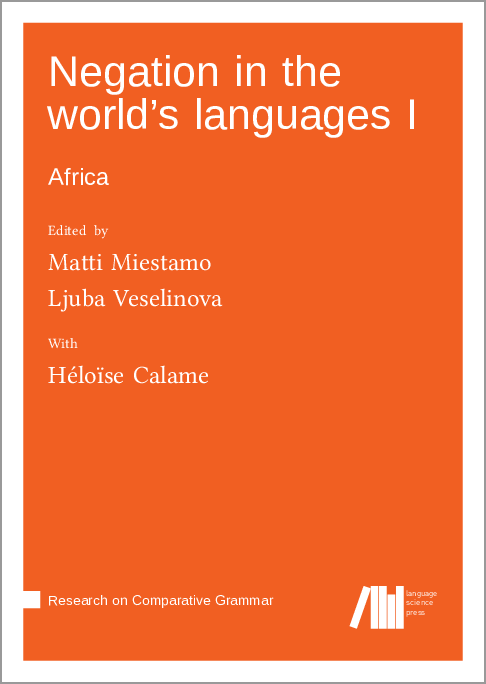We log anonymous usage statistics. Please read the privacy information for details.
Forthcoming: Negation in the world's languages I: Africa
Synopsis
The three-volume work Negation in the world's languages constitutes a major step forward in the comparative study of negation. It includes 43 chapters describing the negation system of one language each, following a typologically and functionally oriented questionnaire. The questionnaire is a comparative tool organized according to functional subdomains of negation. It highlights aspects of negation that have been found salient in typological research, such as standard negation, negation in non-declaratives, negation of stative predications and negative indefinite pronouns. At the same time it aims at a comprehensive coverage of the domain of negation and also allows room for language specific features to be highlighted. By using the questionnaire, the chapters have produced comparable datasets of the negation systems of a wide variety of languages from different families and areas. The contributions are also good examples of the fruitful cooperation between typologists and descriptive linguists in the context of diversity linguistics. On the one hand, typological knowledge is essential for language description as it helps descriptive linguists see their data in a broader perspective, ask new questions and come up with new analyses. On the other hand, typologists are crucially dependent on work done by descriptive linguists for their data collection.
The selection of languages is mainly a result of the response to an open call for papers, originally launched for the workshop on negation organized in connection with the Syntax of the World's Languages VIII conference in Paris in 2018. To balance the representation of different continents, authors working on languages from the areas that were initially least covered were invited to take part. The languages are distributed across the three volumes according to geography, following the macroareal divisions in the Glottolog. The first volume includes languages from Africa, the second one covers languages from Eurasia, and the third one brings together languages from Papunesia, Australia, North America and South America.
This book is complemented by volume II available at https://langsci-press.org/catalog/book/496 and volume III available at https://langsci-press.org/catalog/book/497.
Chapters
-
Introduction
-
Questionnaire for describing the negation system of a language
-
Negation in Beja
-
Negation in Kambaata
-
Negation in Siwi
-
Negation in Lopit
-
Negation in Gyeli
-
Negation in Ngoreme
-
Negation in Ruuli
-
Negation in Cuwabo
-
Negation in Kam
-
Negation in Northwest Gbaya
-
Negation in Mankanya
-
Negation in Mano
-
Negation in Afrikaans



